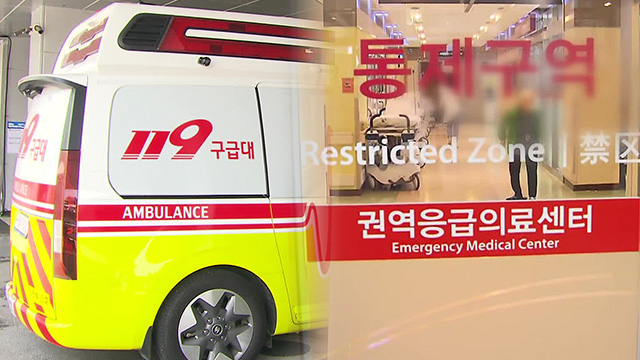As the doctor shortage further creates complications in South Korea, ambulances carrying emergency patients are stuck on “emergency room merry-go-round,” often driving for several hours before patients fail to survive.
The issue of delay in transporting patients to hospitals due to constant rejection from facilities and falling in the cycle of this repeated process has been increasing ever since thousands of medical doctors went on strike led by the Korea Medical Association to protest against the government’s plan to increase annual medical school admission. Despite the government orders for doctors to return to work and implementation of a new law suspending the license of doctors who defied these orders, the protest continued.
“Obviously, allowing the doctors to keep going on these strikes is not great for anyone,” Niko Lambert, Medical Society Club advisor, said. “The job of the doctor is to help the people, but if they go on strikes, there are so many people who are not getting the help they need.”
On Sept. 5, a young woman in her 20s was found at Chosun University after suffering a cardiac arrest. Although the nearest hospital was only 100m away, the ambulance was forced to seek other facilities since the hospital medical staff was unable to be reached. Due to the late treatment, the woman passed away seven days later.
According to the data analysis report from Kyunghyang Shinmun, there were 34 incidents of the emergency room merry-go-round between Feb. 20 to Sept. 24. Out of the 34 patients, 13 died as they missed their golden hour to be safely transported to the hospital. Three of those patients were under the age of 10.
“I think it is a difficult topic because there are a lot of parties involved, but I think the biggest thing is, there is clearly a shortage of doctors in Korea,” Mr. Lambert said. “One of the reasons why doctors don’t go into the areas that are needed in Korea is because they are worried about getting sued for malpractice, which are influenced by strange laws in Korea. People want steady work-life balance with more money, and those areas are going to be in dermatology and plastic surgery, with much lower risk since these are not life-threatening issues. They should keep the standards of medicine high, of course, but it doesn’t mean you have to limit it to a fixed number, especially when the number of doctors per Koreans is so low.”
Out of the several possible causes, some suggest that the lack of facilities is a primary reason for the chaos.
“I think there are a lot of ways to overcome this situation, but I think the main one would probably be to expand facilities, though it would take time,” Haven Cha (11), medical enthusiast, said. “For a short term solution, we can set up temporary hospitals and clinics. If the patient needs an advanced and controlled environment, they should be sent to the actual hospitals, whereas if the patient has an injury, such as a broken arm where the environment doesn’t matter that much, then they could be sent to temporary hospitals.”
There are no signs that the tug-of-war between the South Korean government and the medical profession situation will end anytime soon.


